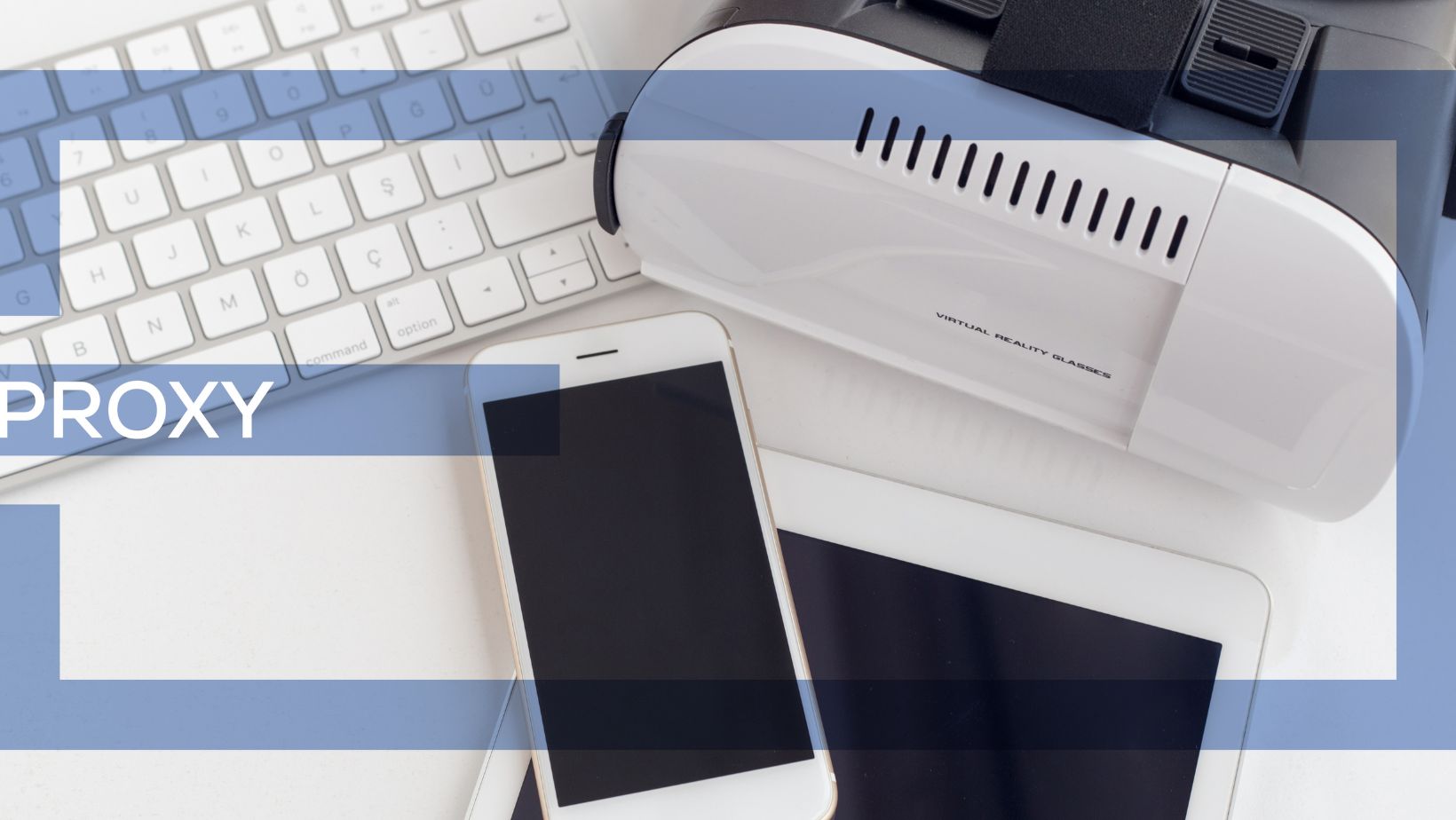In a digital world increasingly defined by surveillance, tracking, and exploitation of personal data, the question is no longer if your activity is being monitored, but how closely. From invasive ad tech and data brokers to opportunistic cybercriminals and overreaching ISPs, the modern internet is a minefield of privacy compromises.
At the heart of online identity lies the humble IP address—a numeric label that quietly reveals your location, your service provider, and, more often than not, your browsing behavior. It’s the keystone of user fingerprinting and targeted profiling.
One of the most effective, yet widely misunderstood, tools for protecting this identity is the proxy server. While VPNs tend to dominate the privacy discourse, proxies serve as the underlying infrastructure for many of today’s privacy-preserving and security-enhancing applications. And in enterprise environments, they’re not optional—they’re foundational.
This article breaks down what you will get if you Purchase proxies, how they enhance cybersecurity and privacy, and why their role has become indispensable in both personal and organizational defense strategies.
🧭 What Is a Proxy, Technically?
A proxy server is an intermediary that sits between your device and the rest of the internet. When you make a web request – say, opening a news site – the request doesn’t go straight to the destination. It’s first routed through the proxy, which then forwards it on your behalf. The response travels back through the proxy before reaching you.
To the website you’re visiting, the proxy, not you, is the source of the request. This masks your IP address and, depending on how the proxy is configured, may also alter headers, strip identifying cookies, or obfuscate the user agent string.
There are multiple types of proxies in use today:
- Forward proxies: Sit between a client and the internet; commonly used by individuals or internal networks.
- Reverse proxies: Sit in front of servers and manage incoming requests, often for load balancing or DDoS mitigation.
- Transparent proxies: Invisible to the user and typically used by ISPs or network admins for content filtering.
- Anonymous and high-anonymity proxies: Designed to strip or obscure identifying information from requests.
Each serves a different function in the broader privacy and security ecosystem.
🧠 Why Proxies Matter in Cybersecurity
1. IP Obfuscation and Location Privacy
At its most basic, a proxy prevents websites, advertisers, and bad actors from directly seeing your real IP. In an age where location-based fingerprinting is used to target ads, adjust pricing, or even deploy malware tailored to regional vulnerabilities, hiding your IP is more than a privacy boost—it’s a defensive posture.

“An IP address is more than a number,” says Rachel Leong, threat researcher at SecurityScorecard. “It’s a data point that can be cross-referenced with leaked datasets, tied to activity patterns, or used to initiate targeted attacks.”
Proxies prevent that correlation, making it significantly harder for adversaries to track users across sessions or link behavioral patterns to physical identities.
2. Bypassing Censorship and Surveillance
In countries with heavy internet censorship—China, Iran, Russia—proxies offer a lifeline to the uncensored web. Many activists and journalists use rotating residential or mobile proxies to access blocked content or communicate securely under hostile regimes.
This isn’t theoretical. In 2024, a coalition of NGOs in Southeast Asia deployed Bright Data’s residential proxy network to allow volunteers to bypass ISP-level firewalls and access independent news sites during political unrest. The result was tens of thousands of sessions routed through clean IPs that mimicked local users, slipping past automated blocking systems.
3. Content Filtering and Threat Prevention
In enterprise environments, proxies often serve a dual role: enforcing acceptable use policies and filtering malicious traffic. For example:
- Blocking known phishing domains
- Preventing access to malware-hosting sites
- Logging outbound traffic to detect exfiltration attempts
This is especially relevant in zero-trust architectures, where no internal device is automatically trusted. Every outbound request is inspected, scored, and filtered. Proxies make this inspection scalable and enforceable.
“We use reverse proxies not just to load balance,” said Thomas Crain, CISO at a large fintech firm. “They’re our first inspection point for anomalous requests and the easiest place to deploy inline threat detection.”
🔍 Proxies vs. VPNs: Not the Same Thing
A common misconception is that proxies and VPNs are interchangeable. They’re not.
- VPNs encrypt your entire internet connection and route all traffic through a secure tunnel.
- Proxies typically route only specific application-level traffic (e.g., HTTP/HTTPS) and don’t inherently provide encryption.
That said, many commercial VPN services rely on proxy infrastructure under the hood, particularly when offering features like split tunneling, geo-targeted browsing, or custom DNS routing. Conversely, many proxies now offer SSL support, blur session headers, and rotate IPs in ways that mimic VPN behavior.
The distinction matters. If your threat model includes packet sniffing or Wi-Fi spoofing, a VPN is essential. If you’re managing scraping operations, ad verification, or geo-fenced access, proxies are often more efficient.
🛡️ How Proxies Enhance Privacy in Practice
🔐 Use Case: Secure Remote Work
In the hybrid workplace model, companies increasingly deploy forward proxies to ensure remote employees route traffic through corporate inspection points. This ensures data leakage prevention, policy enforcement, and secure DNS resolution.
🌍 Use Case: Anonymous Research
Journalists, compliance officers, and competitive analysts often use proxies to anonymously browse target sites. Without them, repeated visits from the same IP might trigger blocking, rate limiting, or tracking.
🛒 Use Case: Brand Protection and Ad Verification
E-commerce and digital advertising companies use proxies to:
- Monitor how ads appear across geographies
- Verify that ads aren’t being fraudulently redirected
- Detect counterfeit versions of their products on competitor sites
These tasks often rely on residential proxies, which are much harder for fraudsters or automated platforms to detect and block.
⚠️ Risks, Limitations, and Ethical Concerns
Despite their utility, proxies come with caveats.
📉 Risk: Trust in the Proxy Provider
When you route traffic through a proxy, you’re trusting that service with your unencrypted data (unless it’s HTTPS). Rogue or misconfigured proxy providers could log, sell, or manipulate that data.
In 2023, researchers at UCL found that many free proxy providers were engaging in man-in-the-middle attacks, injecting JavaScript for ad fraud and stealing credentials. Always verify the reputation and logging policies of your provider.
⚖️ Legal and Compliance Issues
Using proxies to bypass geo-restrictions can violate the terms of service. In corporate environments, using proxies to scrape competitor sites or evade rate limits must be evaluated carefully under anti-competition and trade law.
🧱 Not a Silver Bullet
Proxies mask your IP, but they don’t stop tracking cookies, browser fingerprinting, or behavioral profiling. For full-stack privacy, they should be combined with:

- Browser isolation
- DNS-over-HTTPS
- Anti-tracking tools (uBlock Origin, Privacy Badger)
- Encrypted messaging and secure OS hygiene
✅ Ideal Practices for Privacy-Conscious Proxy Use
- Use reputable, audited proxy providers
Look for transparency reports, privacy policies, and compliance certifications. - Avoid free proxies
They’re often slower, less secure, and sometimes malicious. - Pair with HTTPS and DNS encryption
Prevent your traffic from being intercepted in transit. - Rotate IPs when needed
Especially important for repeated access or automation tasks. - Avoid fingerprint leaks
Use hardened browsers or browser containers to isolate sessions.
🔚 Conclusion
In a time when digital identity is currency, and every click, scroll, and location ping feeds a surveillance ecosystem, proxies offer something increasingly rare: control.
They are not magic cloaks. They are not silver bullets. But when used responsibly, they empower users and organizations to shape their own exposure, to protect their own borders, and to define what privacy means on their own terms.
Because if privacy is the right to be left alone, proxies are one of the few tools that still make that possible.